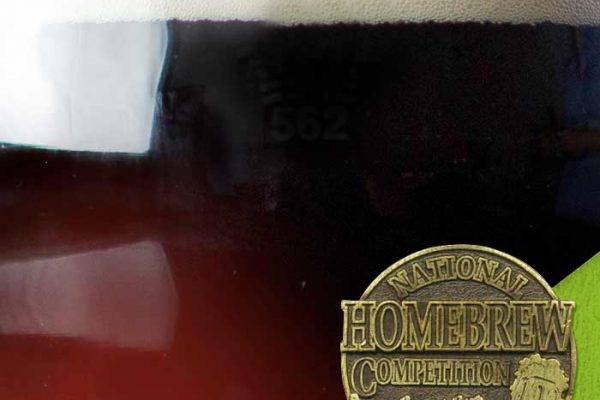

… Read the rest “5 Medal-Winning Eisbock Homebrew Recipes”
"Watching the game, havin’ a Bud."
It’s go time! With nine first round locations and a final round in San Diego, you have the opportunity to win grand prizes, receive first-round feedback, and earn final-round medals from the largest judge pool. The competition culminates with an awards ceremony in Denver.
We encourage you to enter early, as your preferred first round location may reach capacity or move to a waitlist if the demand for competition entries is exceeded.
To Enter the Competition:
Texas’ fun and funky capital city has a lot to offer for beer lovers.
Once a quirky alt-anomaly deep in the heart of Texas, Austin’s mix of art and adventure has lured tourists-turned-residents like the steely strum of a siren’s song. In addition to music venues, bodacious barbecue, and epic tacos fit for three squares a day, this booming metropolis is The Lone Star State’s leading locale for incredible craft beer. The following three-day itinerary is built for soaking up the suds scene at an octet of Austin’s finest ale-and-lager outfits.… Read the rest “Three Beer-Filled Days in Austin, Texas”
The following is AHA Executive Director Julia Herz’s column from the March/April 2024 Zymurgy magazine.
The American Homebrewers Association (AHA) is dedicated to protecting, uniting, and educating homebrewers while empowering an equitable homebrewing culture and showcasing the fun of fermenting. More than thirty thousand members, yourself included, benefit from unmatched reasons and rewards to brew.
Exclusive to members, we publish Zymurgy Magazine (Zymurgy celebrates AHA members and educates those who want to brew and ferment) and broadcast Zymurgy Live webinars featuring the world’s top homebrewing leaders. We curate robust member discounts at brewery tap rooms and homebrew supply shops via over two thousand Member Deals, publish top-of-class resources on homebrewing for beginners and the advanced via HomebrewersAssociation.org,… Read the rest “2024 American Homebrewers Association Overview”
The March/April 2024 Zymurgy magazine is now available! Check out topics on hop water, NA beer, low-carb beer, and Bavarian session lager. Plus 16 recipes!
The post March/April 2024 Zymurgy Magazine Now Available appeared first on American Homebrewers Association.
American Homebrewers Association… Read the rest “March/April 2024 Zymurgy Magazine Now Available”
This is a blend of two beers, refermented with grape juice concentrate from a 1-gallon winemaking kit.
The first beer is a Flanders red–style ale. Mash 60 min. at 152°F (67°C). The only hop addition is 2 oz. of low-alpha Strisselspalt at 60 min. Chill to pitching temperature of about 70°F (21°C), and pitch House and/or Roeselare blend of microbes. Primary 30 days in an HDPE container. (Some natural oxygen ingress through the HDPE during primary is desirable for the style.) Secondary at least 6 months, or as much as 18 months in stainless steel.… Read the rest “SFB 21 Wild Ale”
Bière de garde is a malty style of beer that is undiscovered to many. Translated to “beer for keeping,” the style was traditionally brewed in Northern France. Comparable to a Belgian saison, this beer is known for its malt-focused, toasty taste, and slight sweetness.
Visually, it is clear to slightly hazy, and the color is light amber to chestnut brown or red, largely dependent on which variation it is: blond, brown, or amber. This malt-forward brew’s hop aroma, flavor, and bitterness are low to medium, often with a soft to mouth-coating body.… Read the rest “Bière de Garde: ‘A Breath of Fresh Air’”
Move over light lagers, we’ve got something big to talk about.
Eisbock—pronounced “ice-bock”—is a German-style dark lager with a strength (9-14% alcohol by volume) rivaled only by the strong malt flavors. The eisbock-making process typically involves a freeze distilling/concentrating step as well as extended periods of lagering.
Ready to get started? Try out these 5 gold medal-winning eisbock recipes from the National Homebrew Competition.
For even more world-class beer recipes, including hundreds of NHC winners, visit the AHA’s Homebrew Recipe Library.


… Read the rest “5 Medal-Winning Eisbock Homebrew Recipes”
By Chris Williams, National Homebrew Competition Director
Get ready to show off your brewing skills, and let’s have some fun! Registration for the 2024 National Homebrew Competition (NHC), the world’s largest homebrew competition, opens later this month, on Tuesday, February 27, at 10:00 a.m. MT and will be open through Friday, March 15, or until capacity is reached.
For details about this year’s competition, please read my Director’s Update and visit the website. Key dates and locations are listed below.
Copyright © 2025 Whazup.com
